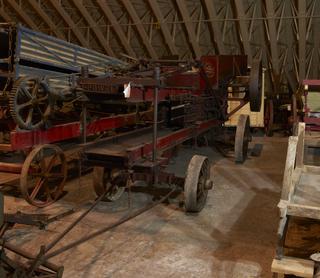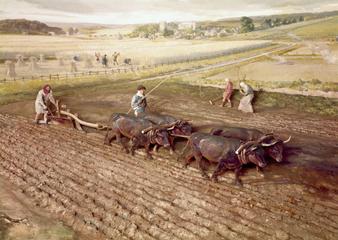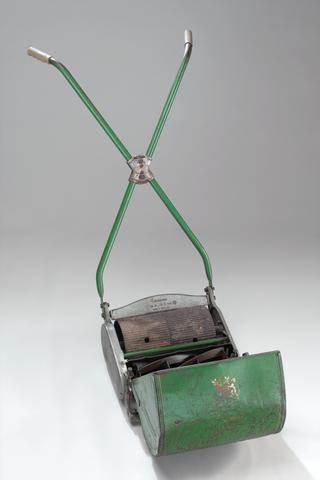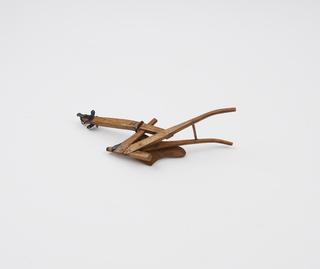Bell's Reaping Machine
The development of the reaping machine by the Reverend Patrick Bell of Forfarshire was one of the earliest steps towards the mechanization of farming operations.
In the design of this machine Bell devised two important features still used in modern combine harvesters. One was the rotating 'reel' with paddles to gather the crop into the cutting mechanism. The other was the use of a set of reciprocating blades to shear the stems with a scissor-like side-to-side motion. (This arrangement was replaced by a set of blades carried on a chain which is now on the machine). The reaper was propelled by two horses walking behind it and pushing the machine through collars harnessed to a pole and cut, on average, one acre per hour.
Only a small number of these machines were constructed, and the extant of Bell's influence has been controversial. Four were exported to the USA before 1831, but the same year Cyrus McCormick introduced a more commercially successful machine. At the Great Exhibition in 1851 American reapers from McCormick and Hussey created a stir and helped to promote the acceptance of reapers in this country. However, Bell received belated recognition for his pioneering work and in 1867, two years before his death, he was awarded a £1000 prize by the Highland and Agricultural Society of Scotland.
- Measurements:
-
overall: 2060 mm x 2200 mm x 3510 mm,
- Object Number:
- 1868-15/1
- type:
- reaping machine
- Image ©
- The Board of Trustees of the Science Museum






